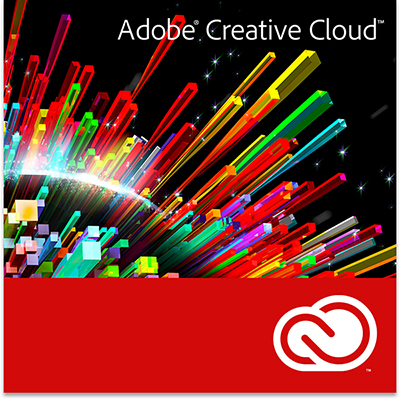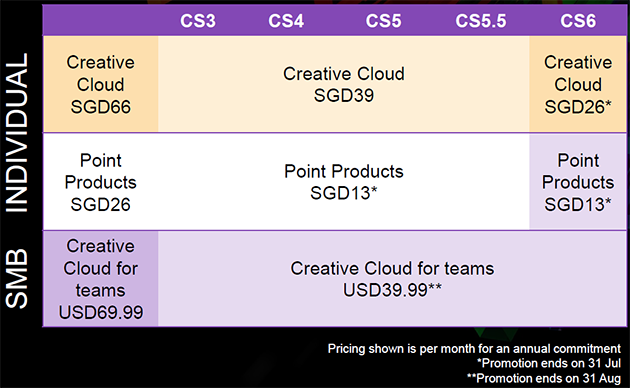When Adobe launched its Creative Cloud offerings to creative professionals in Singapore, it was clear to observers that the software subscription service would be Adobe’s main focus from then on. However, few expected Adobe to scrap its perpetual license offerings entirely and go all-in with Creative Cloud.
But that is exactly what Adobe has announced on Tuesday: the existing Creative Suite 6 will be the last of its kind, and all production software from Adobe will henceforth be issued under the broad Creative Cloud moniker.
As a subscription service, Creative Cloud gives members access to every single product Adobe has to offer as long as they keep up with their monthly payments. If you have no need for the whole range, you can subscribe to individual “point products” such as Photoshop CC only.
To make the transition more appealing, Adobe is offering special promotional pricing to existing users of one version of Creative Suite or another, as detailed in the table below.
With Creative Cloud, Adobe is promising rapid feature updates that aren’t confined to traditional release cycles. So instead of spending thousands of dollars every two or three years to upgrade, Creative Cloud subscribers will always be on the latest software versions Adobe has to offer, giving creative professionals the tools to keep up with the latest trends in design and development.
The new Photoshop CC, for example, brings a number of cool new features, including camera shake blur corrections and new image sharpening algorithms.
This is not, however, a bed of roses for everyone. While Creative Cloud seems like a pretty good deal if you are a creative professional who work with Adobe’s tools daily, it probably won’t be perceived as favourably with the majority of other users, including consumers who, for instance, only fire up their copy of Photoshop once a week.
Plus, whereas you may previously upgrade your copy of Creative Suite only once every five years to get a bigger feature bump, Creative Cloud effectively means you’ll have no choice but to continuously pay for upgrades to the latest versions Adobe has to offer. Once you stop paying, you’ll get cut off from the tools.
Home users whom Adobe can’t convince may think of pirating, but Creative Cloud will severely complicate bootleg copies, as the software must check-in with Adobe’s servers at least once every 30 days or it’ll be rendered unusable. Of course, someone will find a way to pirate eventually, but the process will likely be much more difficult than Creative Suite.
If none of that sounds appealing to you, there’s no need to fret yet. Although CS6 will no longer receive any new features, Adobe has promised for now to keep supporting it with patches and bug fixes wherever needed.








